Physical Address
304 North Cardinal St.
Dorchester Center, MA 02124
The authors thank Drs. Stamatios Lerakis, John Palios, and Randolph P. Martin for their contributions to the previous edition of this chapter.
Transesophageal echocardiography (TEE) is an invaluable tool for diagnosing and evaluating cardiac pathophysiology, and a well-performed TEE provides critical information to aid medical decision making. Therefore, it is of utmost importance that physicians recognize pitfalls and artifacts in TEE imaging that could lead to misdiagnosis and unnecessary invasive procedures. Pitfalls generally refers to misinterpretation of properly represented structures or variants of normal anatomy as pathology. Artifacts refers to phenomena that do not properly represent the structures that are being imaged, thus creating the potential for erroneous interpretation.
The most common pitfalls seen with TEE during clinical practice are the result of variant anatomic structures that are misdiagnosed as abnormal findings but do not necessarily denote pathology.
The crista terminalis is a well-defined fibromuscular ridge formed by the junction of the sinus venosus and primitive right atrium; it extends along the posterolateral aspect of the right atrial wall. The crista terminalis originates from regression of the septum spurium as the sinus venosus is incorporated into the right atrial wall. The regression of the crista terminalis shows wide variations, and thus the appearance of the crista terminalis exhibits variability on TEE. Occasionally, this structure can be prominent and can mimic a mass-like tumor, thrombus, or vegetation in the right atrium. The crista terminalis is best visualized in the midesophageal (ME) bicaval view on TEE as a protuberance into the right atrial cavity at the junction of the superior vena cava and right atrium ( Fig. 15.1 ). An understanding of its variable anatomy can prevent misdiagnosis and unnecessary additional tests.
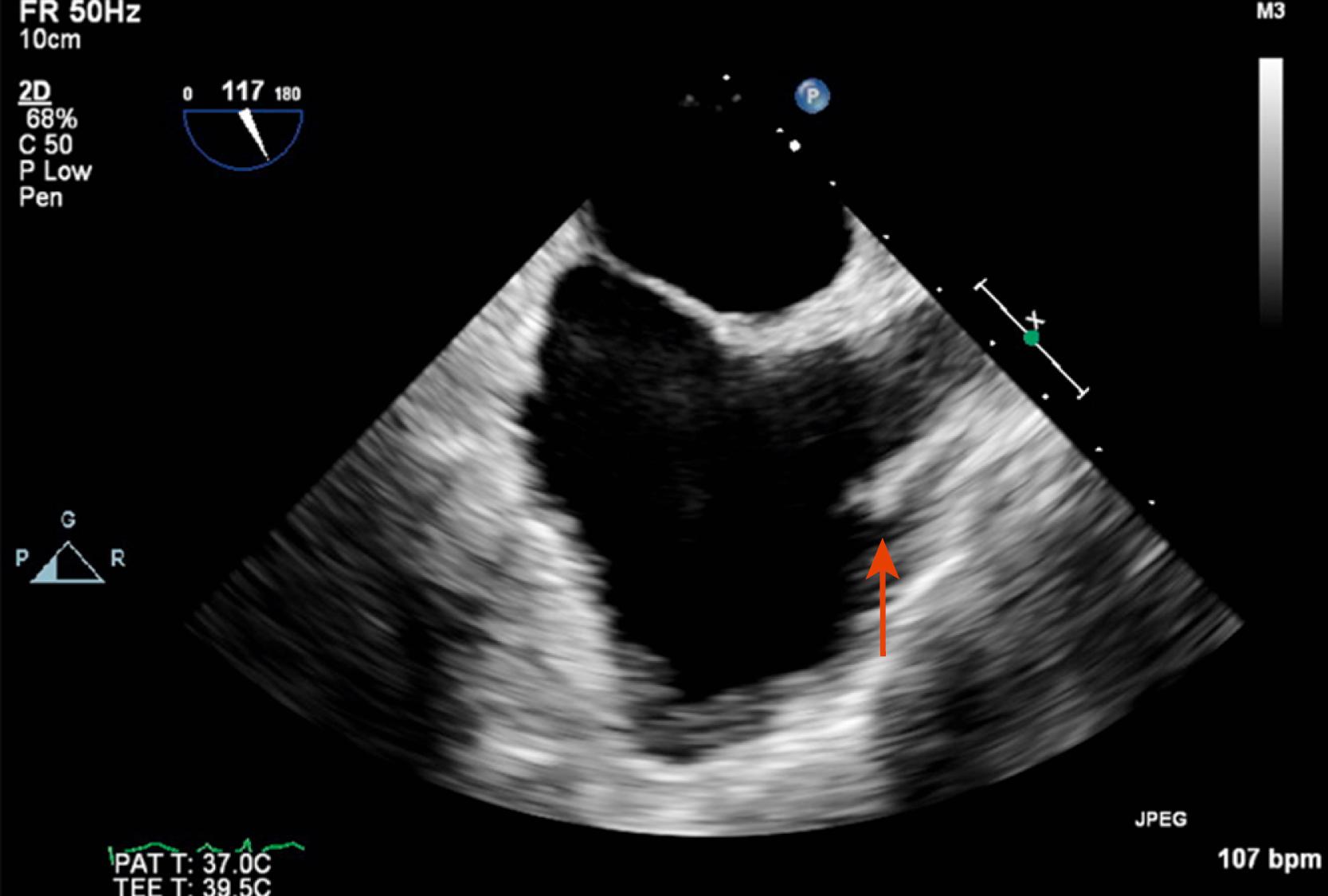
The eustachian valve and the Chiari network may often be misdiagnosed as right atrial intracardiac lesions. The eustachian valve is an embryologic remnant of the right valve of the sinus venosus and can occasionally persist into adulthood, with variable size on echocardiographic imaging. It commonly appears as a flap of tissue originating from the anterior rim of the inferior vena cava of variable length and motion. The Chiari network is also a remnant of incomplete resorption of the right sinus venosus valve and appears as a reticulated network of fibers originating from the eustachian valve and connecting to different parts of the right atrium ( Fig. 15.2 ). On TEE, the Chiari network is seen as a long, thin, highly mobile structure with variable insertion sites. Both of these structures are best visualized in the ME bicaval view on TEE. Neither are of pathologic importance, although, when prominent, they can appear to be pathological structures, such as tumor, thrombus, or vegetation. In rare cases, these structures can be implicated with endocarditis, intracardiac thrombus, and catheter entrapment.
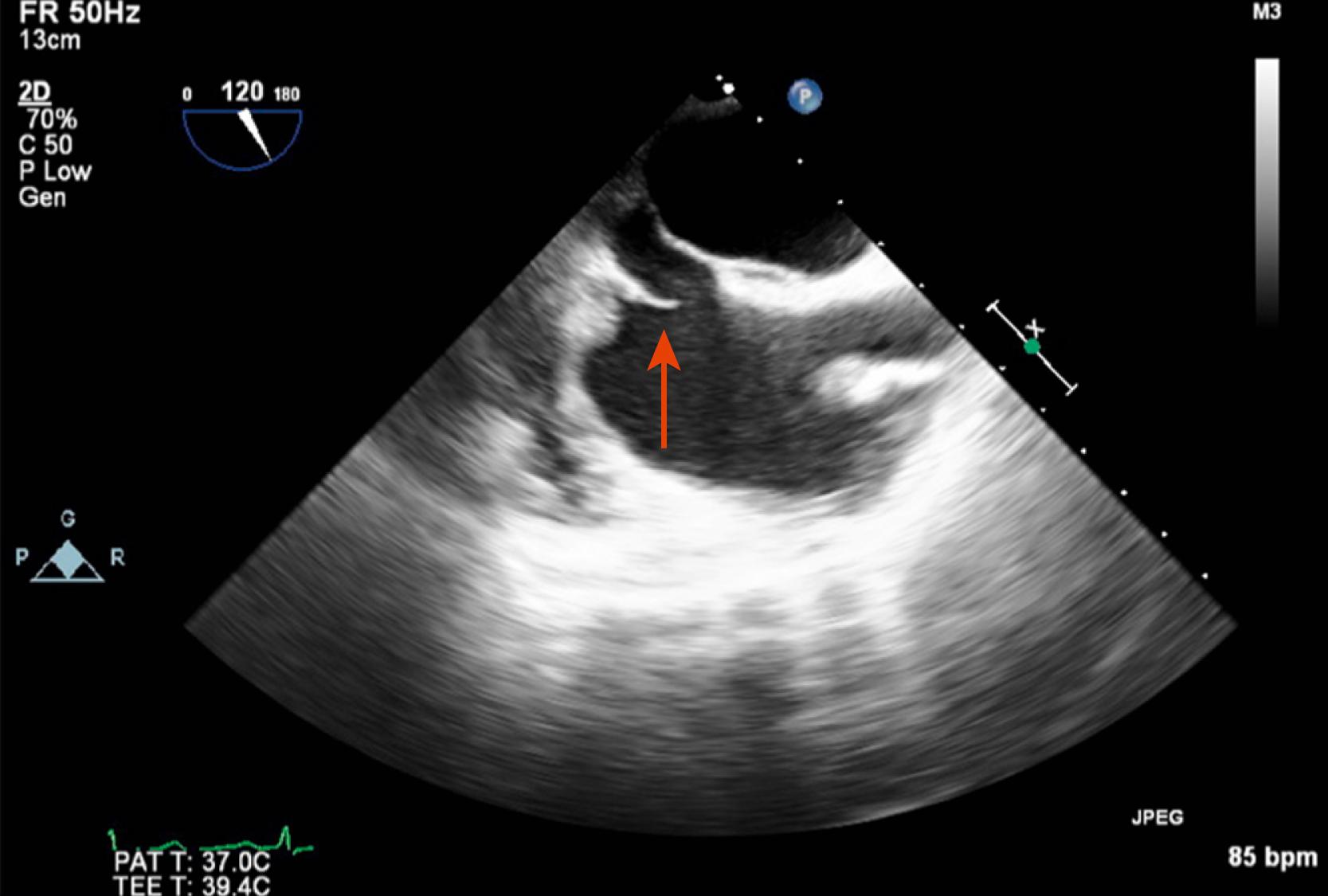
Video 15.1. Midesophageal 117-degree view of crista terminalis (red arrow) mimicking a right atrial mass.
Video 15.2. Midesophageal 120-degree view of a Eustachian valve misdiagnosed as an atrial intracardiac lesion.
Lipomatous hypertrophy of the atrial septum (LHAS) is a benign condition caused by the excessive deposition of adipose tissue in the atrial septum and that is most often detected as an incidental finding on echocardiography. The classic echocardiographic finding is a homogeneous, bilobed configuration of the atrial septum with sparing of the fossa ovalis in the ME four-chamber or bicaval views ( Fig. 15.3 ). LAHS is benign and most commonly detected as an incidental finding.
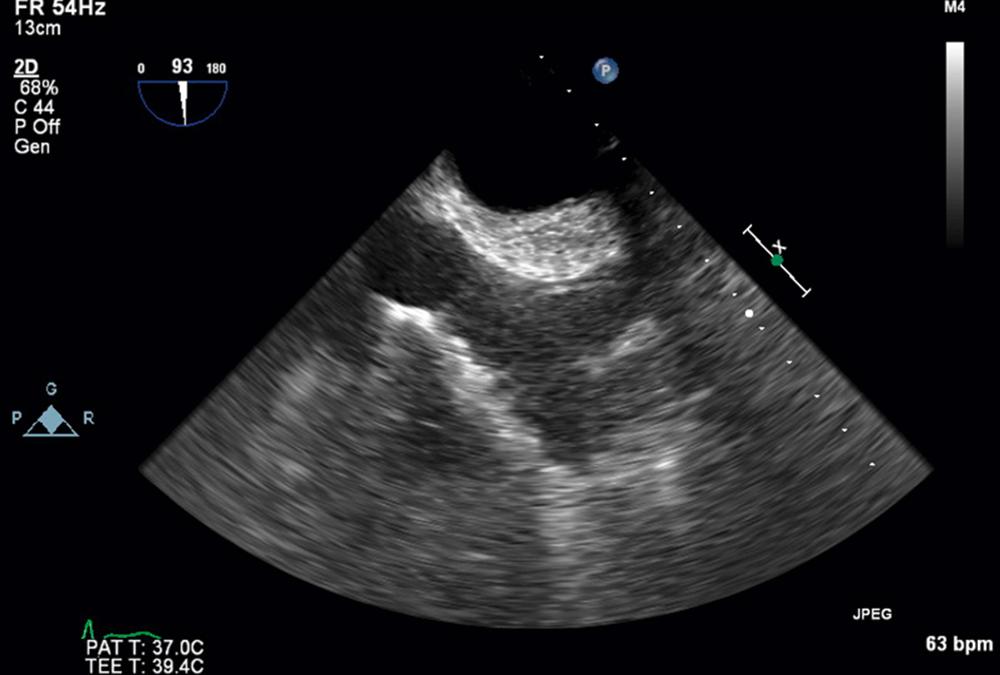
Video 15.3. Midesophageal 93-degree view of lipomatous hypertrophy of the atrial septum.
A prominent muscle ridge covered by endocardium is formed between the left atrial appendage and the atrial insertion of the left upper pulmonary vein. This prominence, best seen in the ME two-chamber view and referred to as a coumadin ridge, has the appearance of a “Q-Tip,” and vigilance is needed to prevent its misdiagnosis as an atrial tumor or thrombus , ( Fig. 15.4 ). The right and left atrial appendages also have pectinate muscles that appear as a number of parallel ridges that protrude into the lumen of the appendage and can be mistaken for thrombus.
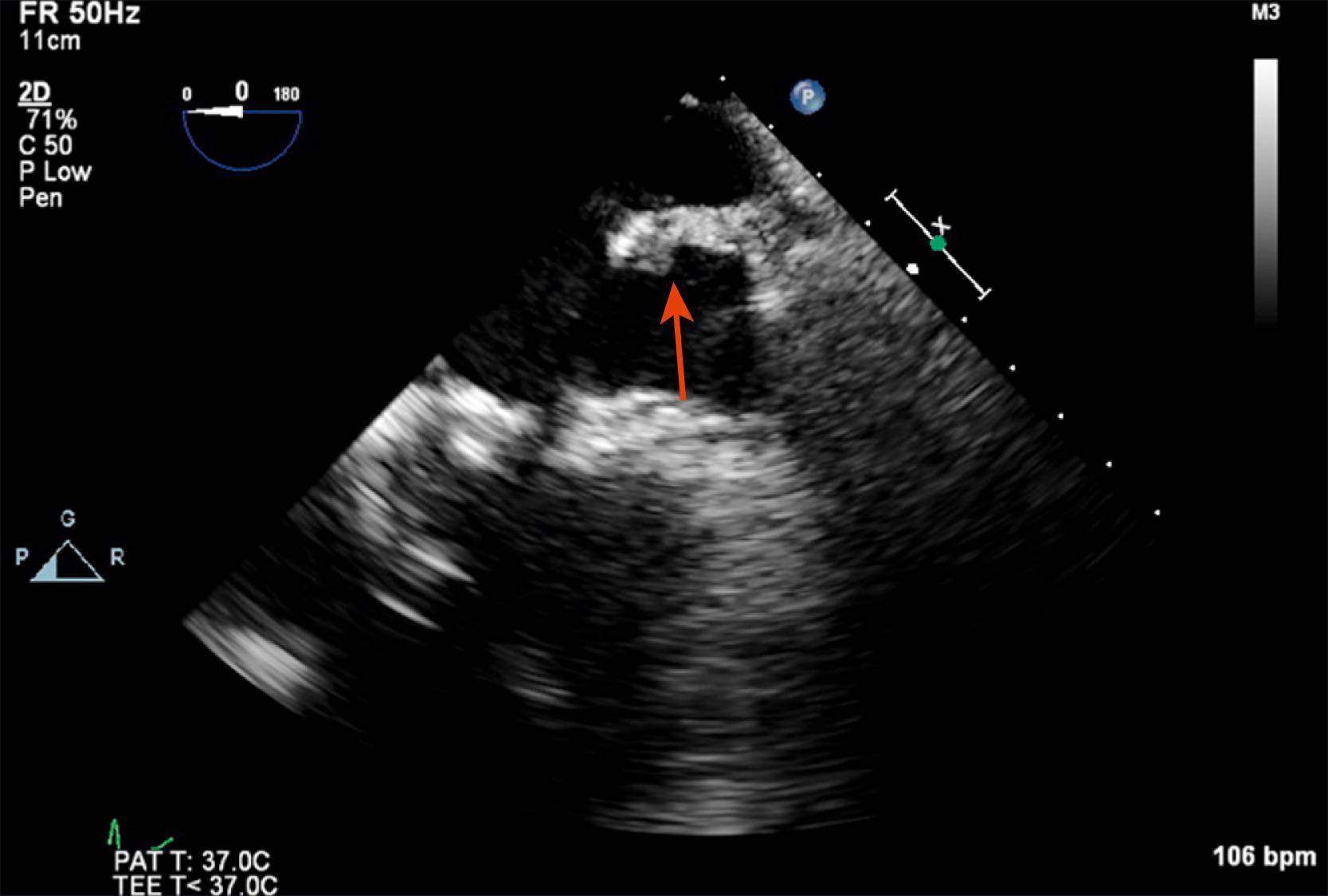
Video 15.4. Midesophageal 0-degree view of a Coumadin ridge (red arrow) mimicking an intracardiac lesion.
The moderator band is in the right ventricular apex and connects the ventricular septum to the anterior papillary muscle, serving as a primary conduction pathway for electrical activation of the free wall of the right ventricle. It appears as a prominent trabecula, which does not seem to be attached to a single side but crosses the lower portion of the right ventricular chamber. This prominence is best seen in the ME four-chamber view and can be misconstrued as an intracardiac mass ( Fig. 15.5 ).
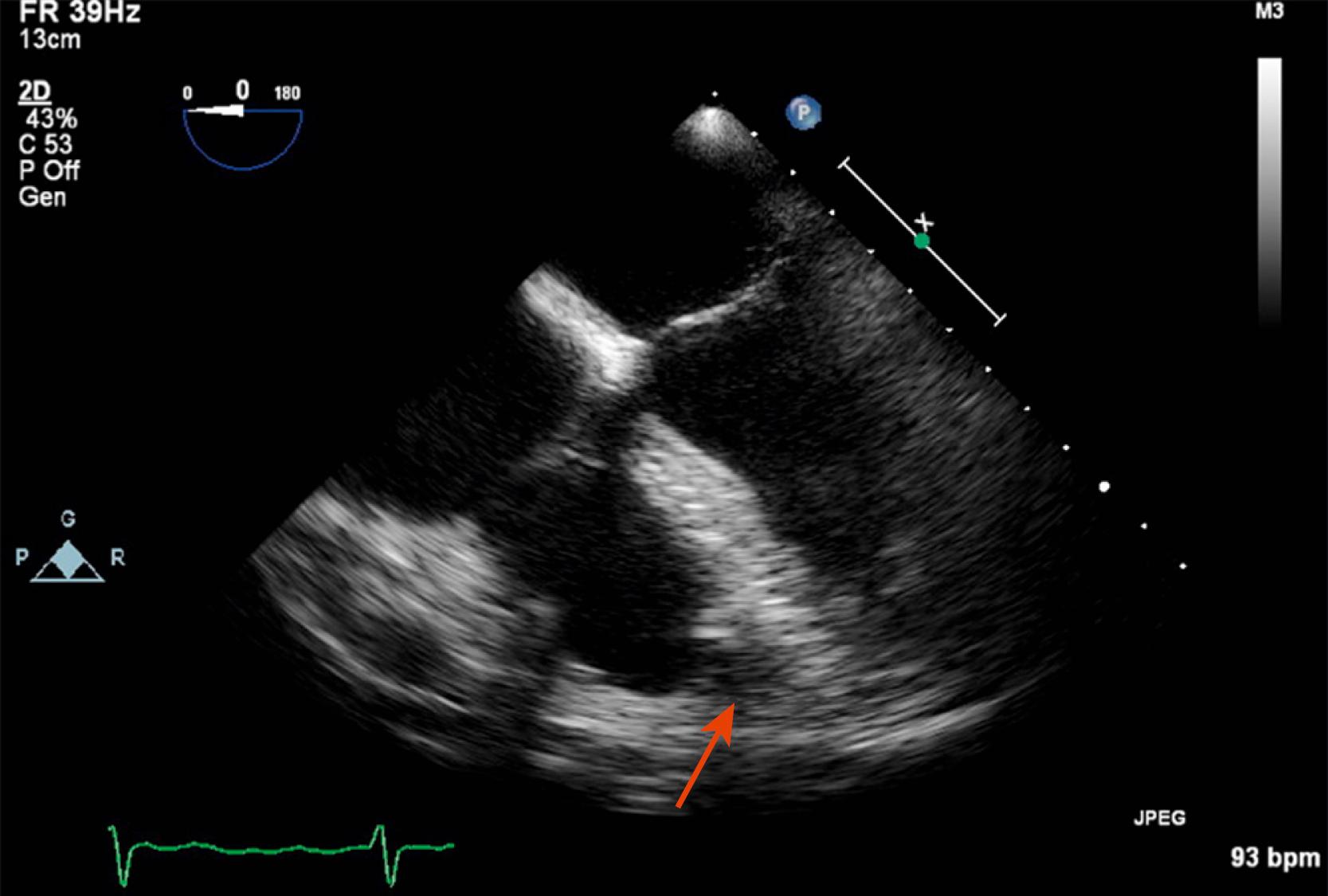
Video 15.5. Midesophageal 0-degree view of a moderator band (red arrow) located in the right ventricular apex.
Lambl excrescences are thin, mobile, filiform structures, often referred to as valvular strands in the echocardiography literature. These strands may occur singly, in rows, or in clusters, often originating from the aortic or the mitral valve in older adult patients. The differential diagnosis for these strands includes papillary fibroelastoma, valvular vegetation or thrombus, and cardiac neoplasms or metastases. Lambl excrescences have been associated with stroke, but the definitive guidelines for their management are controversial. They are best seen in the ME three-chamber view of the long axis of the aortic valve ( Fig. 15.6 ).
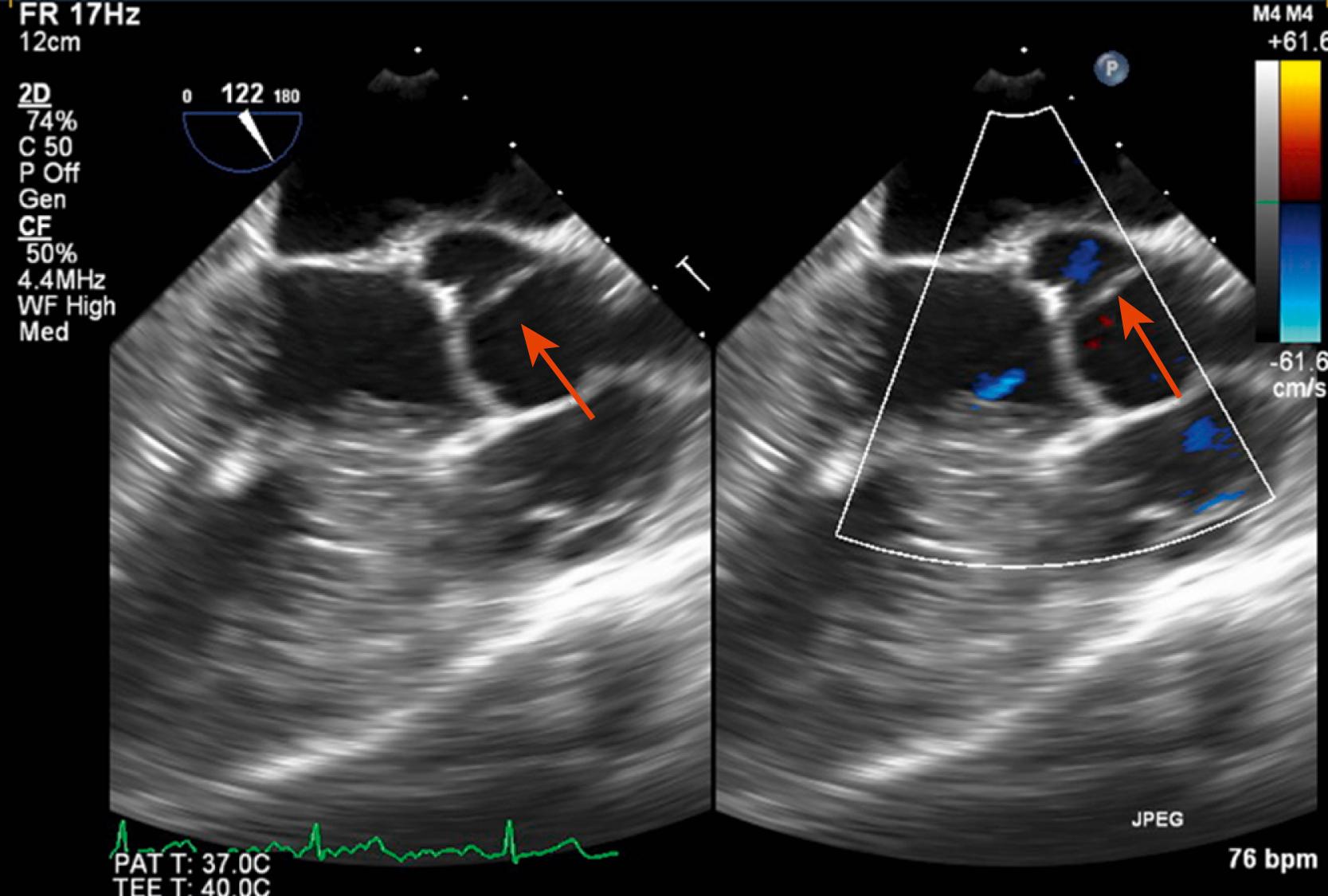
Video 15.6. Midesophageal 122-degree view of Lambl excrescences (red arrow) misinterpreted as an aortic valve vegetation.
Become a Clinical Tree membership for Full access and enjoy Unlimited articles
If you are a member. Log in here